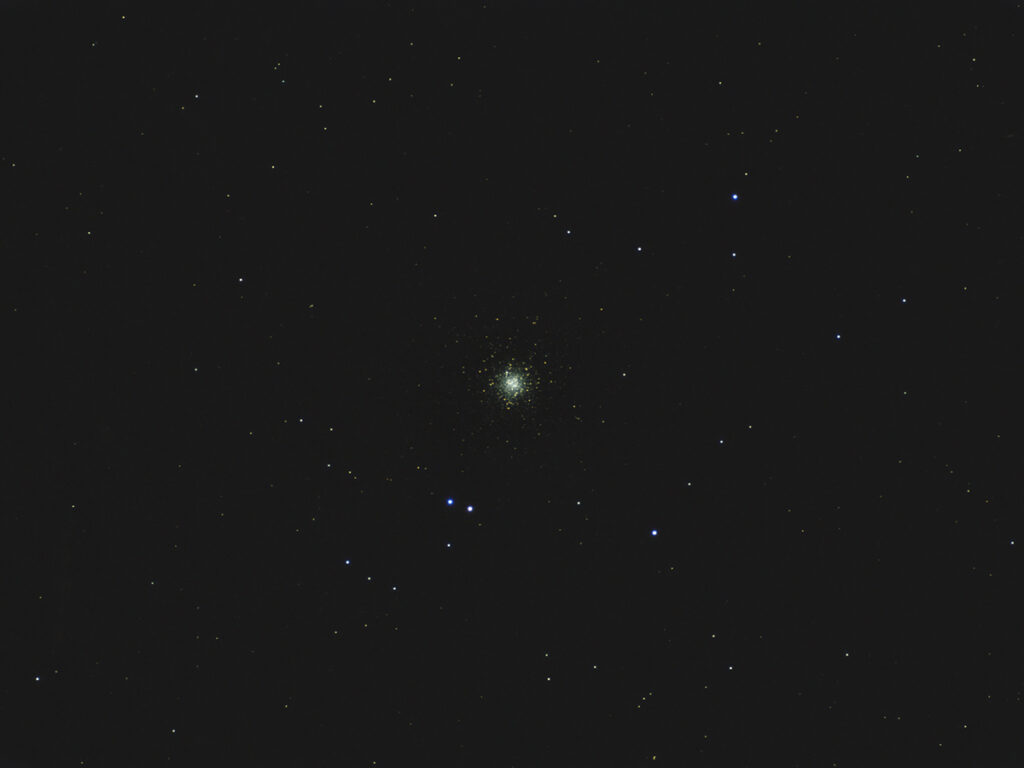
Telescope: Unitron 155 4” f/15 refractor, Atlas EQ-G
Camera: QHY 367c Pro, –20C, GSO IR Blocking Filter
Guide scope: Orion 50mm Guidescope, ASI120MM, PHD
Exposure: 12x300sec, gain 2800, offset 50, saved as FITS, dithered every 2 images
Darks: 32, -20C, gain 2800, offset 50, saved as FITS
Flats: 64×0.5sec, Tee shirt flats taken at dusk
Average Light Pollution: Red zone, Bortle 8, poor transparency
Lensed Sky Quality Meter: 18.2
Stacking: Average, 1 sigma clip
White Balance: Nebulosity Automatic
Software: SharpCap Pro, Deep Sky Stacker, Nebulosity, Photoshop
M53 is a moderately bright and rich globular cluster located just to the northeast of Alpha Comae Berenices (Diadem). Located approximately 60,000 light years from the galactic center and 58,000 light years from the sun, M53 is one of the more distant globular clusters.
M53 is currently well-placed high overhead at sunset.
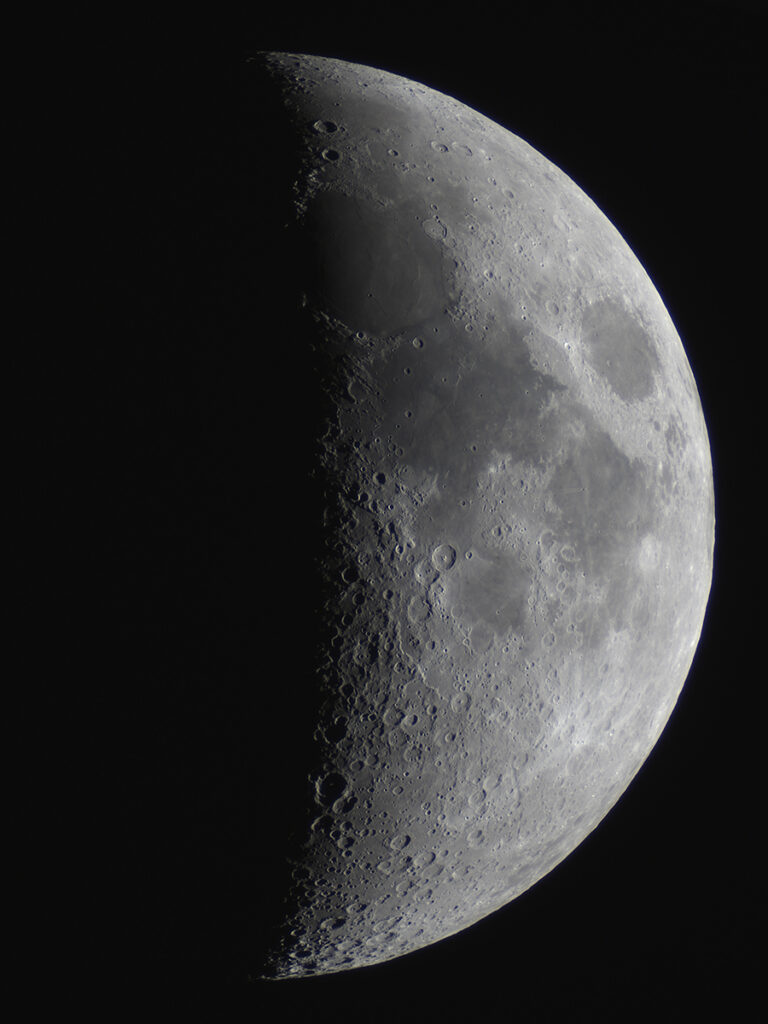
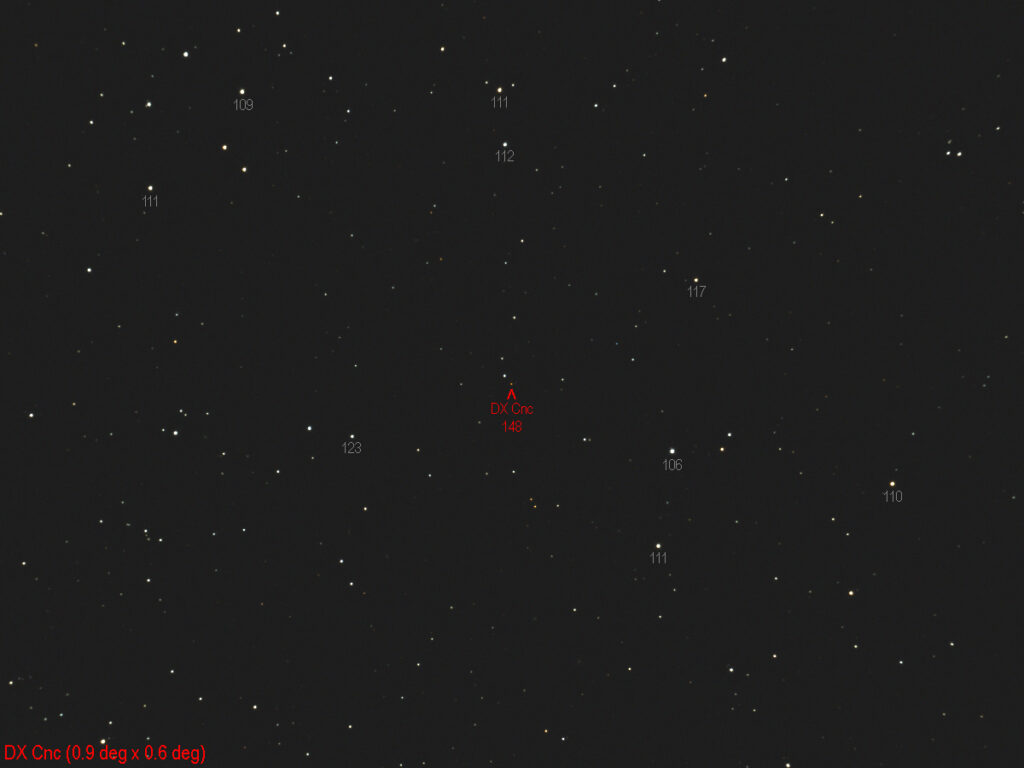
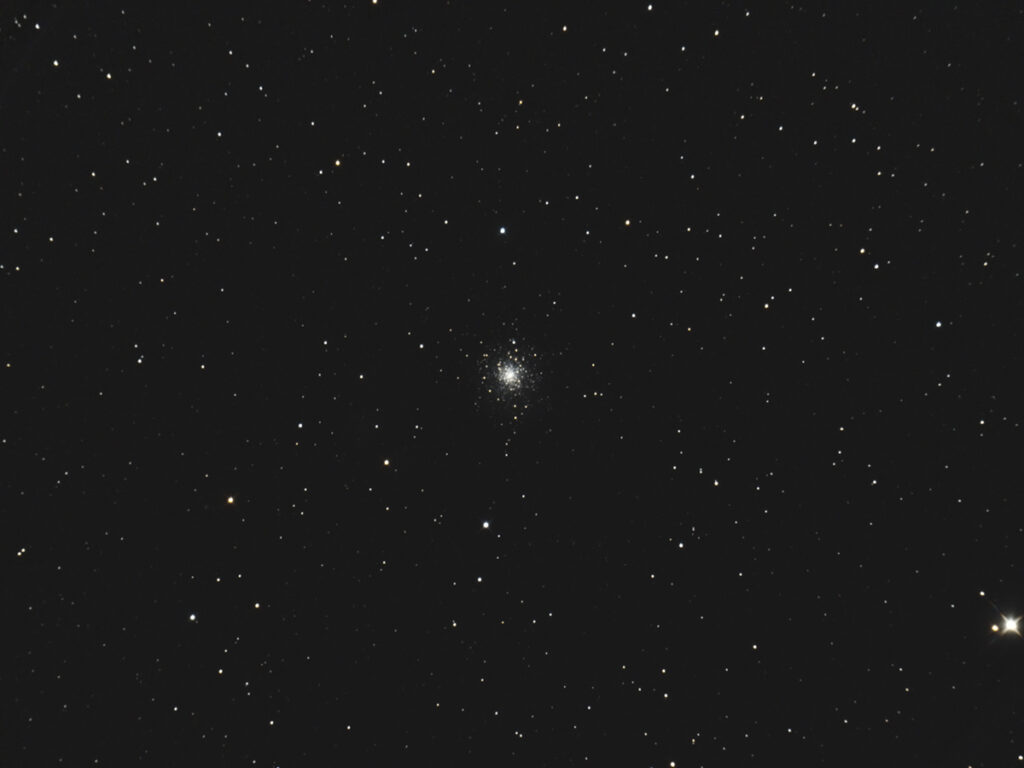
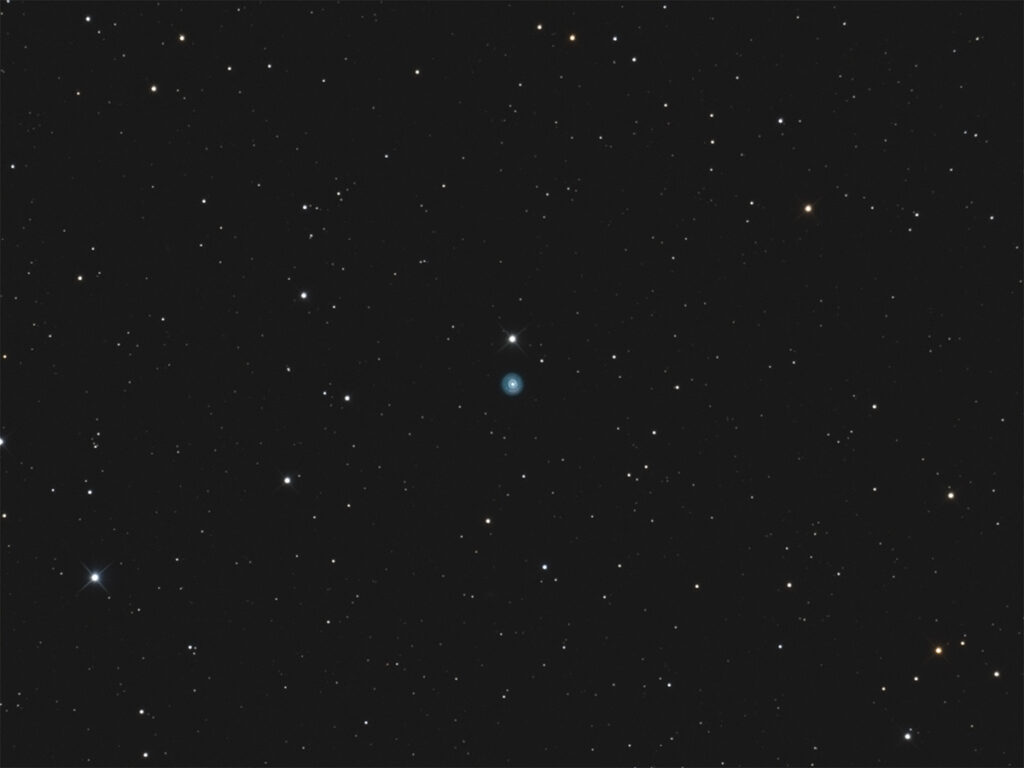
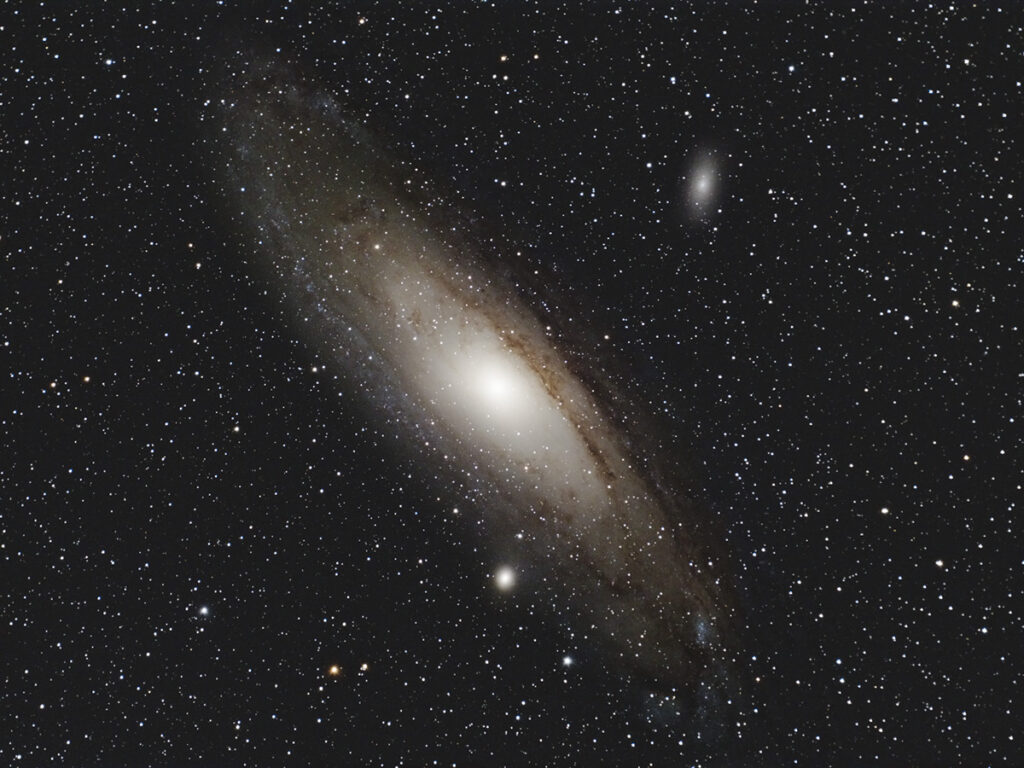
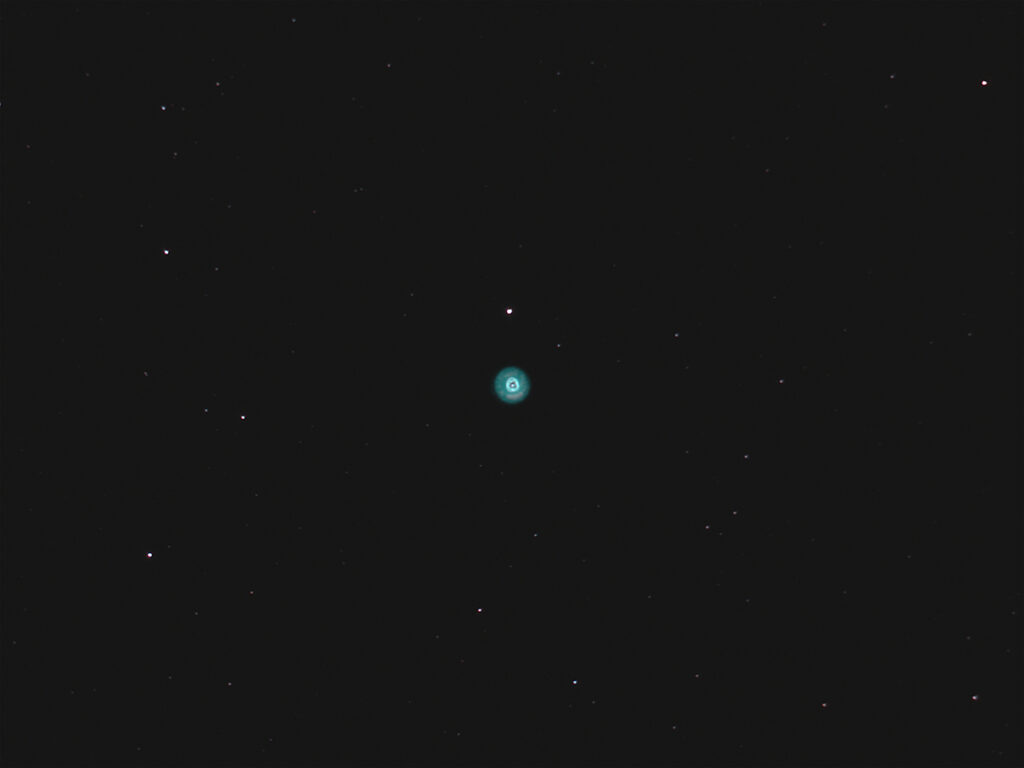



Recent Comments